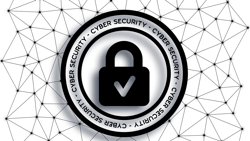Microsoft works with healthcare organizations to protect from popular ransomware during COVID-19 crisis
As part of intensified monitoring and takedown of threats that exploit the COVID-19 crisis, Microsoft has been putting an emphasis on protecting critical services, especially hospitals, according to a company statement.
Now more than ever, hospitals need protecting from attacks that can prevent access to critical systems, cause downtime, or steal sensitive information.
While a wide range of adversaries have been known to exploit vulnerabilities in network devices, more and more human-operated ransomware campaigns are seeing the opportunity and are jumping on the bandwagon. REvil (also known as Sodinokibi) is one of the ransomware campaigns that actively exploit gateway and VPN vulnerabilities to gain a foothold in target organizations. After successful exploitation, attackers steal credentials, elevate their privileges, and move laterally across compromised networks to ensure persistence before installing ransomware or other malware payloads.
Microsoft has been tracking REvil as part of a broader monitoring of human-operated ransomware attacks. Their intel on ransomware campaigns shows an overlap between the malware infrastructure that REvil was observed using last year and the infrastructure used on more recent VPN attacks. This indicates an ongoing trend among attackers to repurpose old tactics, techniques, and procedures (TTPs) for new attacks that take advantage of the current crisis. The company hasn’t seen technical innovations in these new attacks, only social engineering tactics tailored to prey on people’s fears and urgent need for information. The attackers employ human-operated attack methods to target organizations that are most vulnerable to disruption—orgs that haven’t had time or resources to double-check their security hygiene like installing the latest patches, updating firewalls, and checking the health and privilege levels of users and endpoints—therefore increasing probability of payoff.
Human-operated ransomware attacks are a cut above run-of-the-mill commodity ransomware campaigns. Adversaries behind these attacks exhibit extensive knowledge of systems administration and common network security misconfigurations, which are often lower on the list of “fix now” priorities. Once attackers have infiltrated a network, they perform thorough reconnaissance and adapt privilege escalation and lateral movement activities based on security weaknesses and vulnerable services they discover in the network.
In these attacks, adversaries typically persist on networks undetected, sometimes for months on end, and deploy the ransomware payload at a later time. This type of ransomware is more difficult to remediate because it can be challenging for defenders to go and extensively hunt to find where attackers have established persistence and identify email inboxes, credentials, endpoints, or applications that have been compromised.
The global crisis requires everyone to step up, especially since attackers seem to be stepping up in exploiting the crisis, too, even as some ransomware groups purportedly committed to spare the healthcare industry. Through Microsoft’s vast network of threat intelligence sources, they identified several dozens of hospitals with vulnerable gateway and VPN appliances in their infrastructure. To help these hospitals, many already inundated with patients, we sent out a first-of-its-kind targeted notification with important information about the vulnerabilities, how attackers can take advantage of them, and a strong recommendation to apply security updates that will protect them from exploits of these particular vulnerabilities and others.
When managing VPN or virtual private server (VPS) infrastructure, it’s critical for organizations to know the current status of related security patches. Microsoft threat intelligence teams have observed multiple nation-state and cybercrime actors targeting unpatched VPN systems for many months. In October 2019, both the National Security Agency (NSA) and National Cyber Security Centre (NCSC) put out alerts on these attacks and encouraged enterprises to patch.
As organizations have shifted to remote work in light of the pandemic, Microsoft is seeing from signals in Microsoft Threat Protection services (Microsoft Defender ATP, Office 365 ATP, and Azure ATP) that the attackers behind the REvil ransomware are actively scanning the internet for vulnerable systems. Attackers have also been observed using the updater features of VPN clients to deploy malware payloads.
Microsoft strongly recommends that all enterprises review VPN infrastructure for updates, as attackers are actively tailoring exploits to take advantage of remote workers.
The Department of Homeland Security (DHS) Cybersecurity and Infrastructure Security Agency (CISA) and Department of Commerce National Institute of Standards and Technology (NIST) have published useful guidance on securing VPN/VPS infrastructure.
